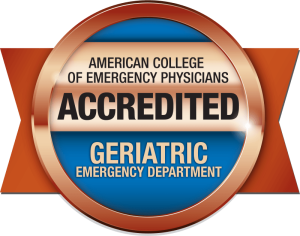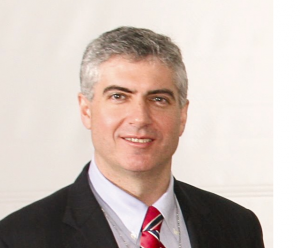 The American College of Emergency Physicians (ACEP) has awarded Flushing Hospital Medical Center’s Emergency Department with Bronze-level accreditation as a Geriatric Emergency Department. This achievement recognizes the Emergency Department’s commitment and ability to provide the highest quality care to geriatric patients.
The American College of Emergency Physicians (ACEP) has awarded Flushing Hospital Medical Center’s Emergency Department with Bronze-level accreditation as a Geriatric Emergency Department. This achievement recognizes the Emergency Department’s commitment and ability to provide the highest quality care to geriatric patients.
An emergency department with Bronze ACEP accreditation features a geriatric emergency care policy initiative, at least one physician with four or more hours of geriatric emergency medicine education, and at least one registered nurse with geriatric emergency medicine education, as well as access patient access to mobility aids, food, and beverages 24/7.
Flushing Hospital’s Emergency Department cares for the needs of older patients in a variety of ways, including:
- Early recognition and care for patients with confusion from causes such as infections, medication reactions, or dementia
- Falls risk assessment and prevention
- Social work and case management support across the spectrum of care from home care to assisted living, short-term rehabilitation, and skilled nursing facility placement
- Palliative care services to assist patients and families with decisions about end-of-life care that align with their own values and priorities
“We recognize that our older patients often have special needs, and our team is dedicated to supporting those needs,” said Dr. James F. Giglio, Chair of Flushing Hospital’s Department of Emergency Medicine. “We utilize best practices promoted by the American College of Emergency Physicians to optimize care within the Emergency Department throughout hospitalization and when transitioning care at the time of hospital discharge.”
Congratulations to everyone at the FHMC Emergency Department for this achievement!
All content of this newsletter is intended for general information purposes only and is not intended or implied to be a substitute for professional medical advice, diagnosis or treatment. Please consult a medical professional before adopting any of the suggestions on this page. You must never disregard professional medical advice or delay seeking medical treatment based upon any content of this newsletter. PROMPTLY CONSULT YOUR PHYSICIAN OR CALL 911 IF YOU BELIEVE YOU HAVE A MEDICAL EMERGENCY.

